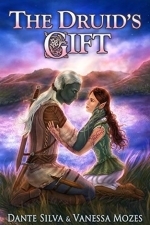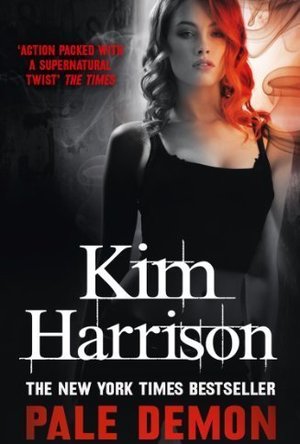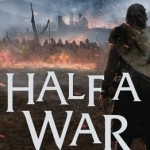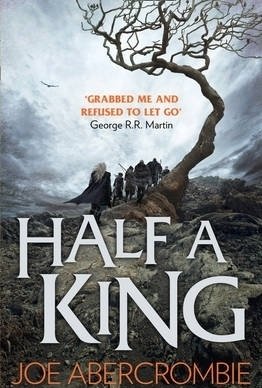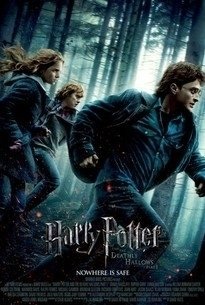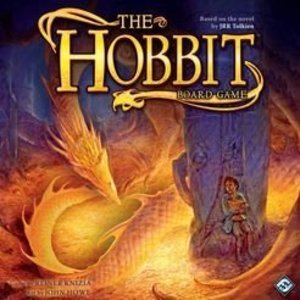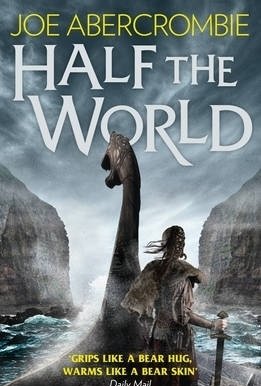Search
Debbiereadsbook (1617 KP) rated The Druid's Gift (The Nameless Gods #1) in Books
Jan 7, 2018
very well written high fantasy
Independent reviewer for Archaeolibrarian, I was gifted my copy of this book.
She was supposed to on a pilgrimage, being kidnapped for sacrifice was not in the plan!
I gotta be honest here, and you'll know when I gotta talk about my feelings about books, I'm nothing if not honest! When asked did I want to read this book, it came with a link, and of course I looked at it, and my first reaction was nope. That cover did nothing for me, but the blurb grabbed, so I said yes. NOW, I've read this book, and feel I should say this. That cover is right and proper for this book!! It fits Nune and Ty's story so perfectly! And it is a rather good book!
Nune is a day elf, a Druid, and Ty a night elf. They usually never cross paths. Nune is on a pilgrimage and Ty is on an initiation to move up the warrior ranks, I forget what the name he used is, sorry! Nune was supposed to be his sacrifice for this initiation, but after befriending each other, they question why Ty suddenly has to do this, when it's never been required of warriors before.
It is, quite simply, brilliantly written high fantasy. I really find myself engrossed in Nune and Ty, and their path towards finding out just what is going on in Ty's village, and why things are changing so rapidly, to the detriment of the day elves. It's told from both Nune and Ty's point of view. It does carry some difficult subjects, kidnap, elf sacrifice but these are dealt with very well.
Its not overly explicit, indeed, I thought it might actually come out clean, but Nune and Ty do get naughty on. Again, well written. Not overly graphic either, what's here is right for this book.
And there is a MUCH bigger picture that I'm still not seeing. Ty's brother is missing. There's the reason why the Nameless Gods are being summoned. And Ty still has to face his superiors about his failed quest when he gets home.
A step out of my comfort zone, but a very nice step. I hope I get to foloow Nune and Ty on their quest.
And an apology to the author for not spelling Nune with accent on the e, I don't know how to put that on!
4 solid stars
**same worded review will appear elsewhere**
She was supposed to on a pilgrimage, being kidnapped for sacrifice was not in the plan!
I gotta be honest here, and you'll know when I gotta talk about my feelings about books, I'm nothing if not honest! When asked did I want to read this book, it came with a link, and of course I looked at it, and my first reaction was nope. That cover did nothing for me, but the blurb grabbed, so I said yes. NOW, I've read this book, and feel I should say this. That cover is right and proper for this book!! It fits Nune and Ty's story so perfectly! And it is a rather good book!
Nune is a day elf, a Druid, and Ty a night elf. They usually never cross paths. Nune is on a pilgrimage and Ty is on an initiation to move up the warrior ranks, I forget what the name he used is, sorry! Nune was supposed to be his sacrifice for this initiation, but after befriending each other, they question why Ty suddenly has to do this, when it's never been required of warriors before.
It is, quite simply, brilliantly written high fantasy. I really find myself engrossed in Nune and Ty, and their path towards finding out just what is going on in Ty's village, and why things are changing so rapidly, to the detriment of the day elves. It's told from both Nune and Ty's point of view. It does carry some difficult subjects, kidnap, elf sacrifice but these are dealt with very well.
Its not overly explicit, indeed, I thought it might actually come out clean, but Nune and Ty do get naughty on. Again, well written. Not overly graphic either, what's here is right for this book.
And there is a MUCH bigger picture that I'm still not seeing. Ty's brother is missing. There's the reason why the Nameless Gods are being summoned. And Ty still has to face his superiors about his failed quest when he gets home.
A step out of my comfort zone, but a very nice step. I hope I get to foloow Nune and Ty on their quest.
And an apology to the author for not spelling Nune with accent on the e, I don't know how to put that on!
4 solid stars
**same worded review will appear elsewhere**
Haley Mathiot (9 KP) rated The Fire Lord's Lover (The Elven Lords, #1) in Books
Apr 27, 2018
Dominic has spent years perfecting his rock-hard shell, keeping his human heart under lock and key, for fear of getting hurt again. His brutal horrible father has tortured him for his softness and lack of black fire magic for years, and Dominic can’t handle any more. So he isn’t prepared for a kind, sweet, tender-hearted wife…
Cassandra has been raised in the catholic school, but trained in to fight in the rebellion as a death-dance assassin. She is sent to marry the son of the Imperial Fire Lord, so that she can get close enough to the Fire Lord to kill him. She knows it’s a death mission, and she’s fully prepared… but she’s not so sure she wants to part with Dominic once she breaks down his hard exterior shell.
As Dominic and Cassandra begin to love each other, Dominic starts to worry about Cassandra’s mission, and Cassandra worries about Dominic’s father trying to kill him. How can two people who love each other protect each other, if protection of the one ends with death for the other? And what of the evil Fire Lord’s hate towards the people and the rebellion against the elves?
I enjoyed The Fire Lord’s Lover from start to finish. The characters were developed quickly and I liked them, the dialogue felt right, and the pacing was great.
The most important thing about The Fire Lord’s Lover, the thing that made it good, was the character’s love for each other. It didn’t feel sappy and fake, centered around physical attraction. It was real and it had reason behind it. Cassandra and Dominic needed each other, and the people needed them together.
At first, I didn’t really like the ending. I almost got a little annoyed at it… but the more I thought about it, the more I liked it—a lot like It’s Not Summer Without You. I didn’t quite like it at first, even though I knew why Kennedy had done what she did… but then I thought back over it again, envisioned in my mind how it would play out, and was very pleased. I won’t spoil it! But I will say that it was surprisingly satisfying.
Content: I thought the love scenes were slightly overkill… I was literally skipping chunks of pages at a time (I don’t read the scenes). There was a little bit of language, but it wasn’t bad and I felt it was appropriate.
Recommendation: Ages 18+
I’ve got a giveaway for 2 copies of The Fire Lord’s Lover up for grabs, and (soon) my ARC will be available for swap at ARC Swap.
Cassandra has been raised in the catholic school, but trained in to fight in the rebellion as a death-dance assassin. She is sent to marry the son of the Imperial Fire Lord, so that she can get close enough to the Fire Lord to kill him. She knows it’s a death mission, and she’s fully prepared… but she’s not so sure she wants to part with Dominic once she breaks down his hard exterior shell.
As Dominic and Cassandra begin to love each other, Dominic starts to worry about Cassandra’s mission, and Cassandra worries about Dominic’s father trying to kill him. How can two people who love each other protect each other, if protection of the one ends with death for the other? And what of the evil Fire Lord’s hate towards the people and the rebellion against the elves?
I enjoyed The Fire Lord’s Lover from start to finish. The characters were developed quickly and I liked them, the dialogue felt right, and the pacing was great.
The most important thing about The Fire Lord’s Lover, the thing that made it good, was the character’s love for each other. It didn’t feel sappy and fake, centered around physical attraction. It was real and it had reason behind it. Cassandra and Dominic needed each other, and the people needed them together.
At first, I didn’t really like the ending. I almost got a little annoyed at it… but the more I thought about it, the more I liked it—a lot like It’s Not Summer Without You. I didn’t quite like it at first, even though I knew why Kennedy had done what she did… but then I thought back over it again, envisioned in my mind how it would play out, and was very pleased. I won’t spoil it! But I will say that it was surprisingly satisfying.
Content: I thought the love scenes were slightly overkill… I was literally skipping chunks of pages at a time (I don’t read the scenes). There was a little bit of language, but it wasn’t bad and I felt it was appropriate.
Recommendation: Ages 18+
I’ve got a giveaway for 2 copies of The Fire Lord’s Lover up for grabs, and (soon) my ARC will be available for swap at ARC Swap.
Rachel King (13 KP) rated Pale Demon (The Hollows, #9) in Books
Feb 11, 2019
One of the things I have grown to love about Rachel Morgan through all of these nine books is her constant positive and hopeful perspective with others, despite how contrary their behavior. Though her friends and partners are telling her in so many ways that the rulers of her kind, the witches' council, will never let her make it to the coast and are more interested in killing her than anything else, she won't believe it until she sees for herself. And then there is her odds-defying ability to always find a way to survive against all attacks - she truly has become one of a kind, as is revealed in several ways in this book, with her match-up against the just-released demon creation that is her genetic match, as well as the sad speech that Ivy gives her about how Rachel is leaving her and Jenks behind with the way she can create change across all species.
And if that is not enough to keep her busy, Rachel's love life only becomes more complicated, since Pierce has professed his love for her in the previous book, and Rachel feels a certain obligation to him. Of course, Al continues to pursue Rachel despite her refusals, and one violent-turned-steamy moment showed the kind of lust-filled potential that exists between them. Towards the end of the book, Rachel also makes a rather interesting observation about demons in general that could put Al in the potential category for future books. If two men is not enough to keep her busy, a very obvious growing attraction between her and Trent seems to show the most promise, and is ironically the one I found myself most rooting for, especially with some of the scenes in the book.
Trent's part in the book is an elf quest of sorts that he is particularly silent about, but gets him in all kinds of trouble and just creates more work for Rachel and crew. Of course, the outcome of this quest makes Trent more likable in the end, but he has to do much to prove himself to Rachel. The newest element to the series in this book was the use of wild magic by the elves, which has an untamed, old world quality that Rachel dislikes immensely. Trent wields it well, though often secretly and against Rachel's wishes.
In the end, the revelations that Rachel undergoes regarding herself and the people around her mark a major turning point for her and the series. I only wish I knew when the next book was due for release!
And if that is not enough to keep her busy, Rachel's love life only becomes more complicated, since Pierce has professed his love for her in the previous book, and Rachel feels a certain obligation to him. Of course, Al continues to pursue Rachel despite her refusals, and one violent-turned-steamy moment showed the kind of lust-filled potential that exists between them. Towards the end of the book, Rachel also makes a rather interesting observation about demons in general that could put Al in the potential category for future books. If two men is not enough to keep her busy, a very obvious growing attraction between her and Trent seems to show the most promise, and is ironically the one I found myself most rooting for, especially with some of the scenes in the book.
Trent's part in the book is an elf quest of sorts that he is particularly silent about, but gets him in all kinds of trouble and just creates more work for Rachel and crew. Of course, the outcome of this quest makes Trent more likable in the end, but he has to do much to prove himself to Rachel. The newest element to the series in this book was the use of wild magic by the elves, which has an untamed, old world quality that Rachel dislikes immensely. Trent wields it well, though often secretly and against Rachel's wishes.
In the end, the revelations that Rachel undergoes regarding herself and the people around her mark a major turning point for her and the series. I only wish I knew when the next book was due for release!
Natacha (374 KP) rated Half a War (Shattered Sea, Book 3) in Books
Jan 13, 2020
My poor little heart! I think this is my favourite book in the trilogy. It's going to be hard to do a spoiler-free review so just in case: Might contain LIGHT SPOILERS
Things I liked:
-In book two on of my complaints was that the base of the story plot resembled a lot the story plot of the first one. Well, this one was completely different. This one is about different kingdoms coming together to defeat the enemy.
-I loved how the characters evolve in this book, more than the previous two. I love seeing Skara turned into a powerful Queen, I love seeing other character falling from hight. And Yarvi. Although it's not one of our main POV we see a lot of him and how much he has changed since book one.
-What I like in Abercrombie writing is that he right the relationship between characters in a way that they feel true to life. If two characters are not meant to be together for X or Y reason he will not come up with a plot or excuse to pair those characters just because this is what our heart wants. And I always appreciate that no matter how much it hurts.
-Raith! I loved this character so much. I have a sweet spot for bad boys that deep down are good. Especially when we get to see this side of them come out naturally.
-I rarely cry when reading books or watching movies, and I still didn't while reading this book but it did manage to make my heart feel sad. Well done!
-Raith and Skara. Oh, my little heart. I loved those two together.
-We got to see even more magic than book two!
-They where a couple of big twists that I didn't see coming. Especially the one with the traitor. Kept me guessing throughout the book and when we learn how it was I wasn't expecting it.
Things I didn't like
It was very hard to find things that I didn't like but here some nitpicking
-So you know how I said that I loved the plot twist with the traitor. I did I'm not taking it back but... If you look closely I feel like maybe there are some tiny plothole that I can't really discuss without spoiling everything.
-The elves. Although we see way more elf-magic we still don't really get a lot of information about them. At the end of this trilogy, a still feel that I wanted to know more about them.
Things I liked:
-In book two on of my complaints was that the base of the story plot resembled a lot the story plot of the first one. Well, this one was completely different. This one is about different kingdoms coming together to defeat the enemy.
-I loved how the characters evolve in this book, more than the previous two. I love seeing Skara turned into a powerful Queen, I love seeing other character falling from hight. And Yarvi. Although it's not one of our main POV we see a lot of him and how much he has changed since book one.
-What I like in Abercrombie writing is that he right the relationship between characters in a way that they feel true to life. If two characters are not meant to be together for X or Y reason he will not come up with a plot or excuse to pair those characters just because this is what our heart wants. And I always appreciate that no matter how much it hurts.
-Raith! I loved this character so much. I have a sweet spot for bad boys that deep down are good. Especially when we get to see this side of them come out naturally.
-I rarely cry when reading books or watching movies, and I still didn't while reading this book but it did manage to make my heart feel sad. Well done!
-Raith and Skara. Oh, my little heart. I loved those two together.
-We got to see even more magic than book two!
-They where a couple of big twists that I didn't see coming. Especially the one with the traitor. Kept me guessing throughout the book and when we learn how it was I wasn't expecting it.
Things I didn't like
It was very hard to find things that I didn't like but here some nitpicking
-So you know how I said that I loved the plot twist with the traitor. I did I'm not taking it back but... If you look closely I feel like maybe there are some tiny plothole that I can't really discuss without spoiling everything.
-The elves. Although we see way more elf-magic we still don't really get a lot of information about them. At the end of this trilogy, a still feel that I wanted to know more about them.
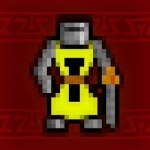
Warlords Classic - official port from Mac/PC/Amiga
Games
App
Warlords Classic is an official port of the fabulous game you have been playing in your childhood on...
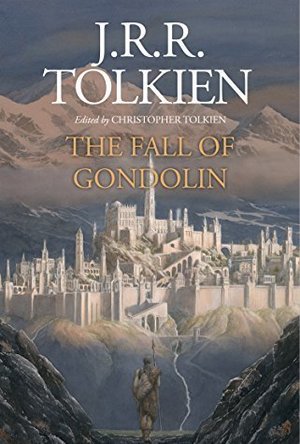
The Fall of Gondolin
Book
In the Tale of The Fall of Gondolin are two of the greatest powers in the world. There is Morgoth of...
Natacha (374 KP) rated Half a King (Shattered Sea #1) in Books
Oct 26, 2019
Contains spoilers, click to show
Original review : https://wp.me/pbesru-7z
Another book that I picked because of booktuber Holly Hearts Books and once again a book that I really enjoyed.
At its base, the main story is a very basic and simple one: a young prince betrayed by his own family and now sicks revenge. We've seen that many times, by what makes it different is the execution.
Things I liked:
- The characters. We have a group of six characters all very interesting, intriguing, well rounded, they all have their own voice and their own motivations. I love watching them bound and go from hating each other to be willing to die for each other.
- Yarvi's growth. Yarvi gowns a lot throughout the story. He goes from peaceful minister to-be, to an insecure king, to hopeless slave and much more. And with every step, we can see the changes to his personality, from a sweet little boy to a man that walks the line of becoming something he hates and much more.
- Nothing. And when a say Nothing I mean the character Nothing. That's right there is a character call like this. And he was one very mysterious and twisted character.
- But most off all what really makes this book amazing for me was the ending. There were a couple of passages where I could easily predict what was going to happen, but boy I didn't see the two plot twist at the end! And especially the first one was so good!!!
-<spoiler> You don't get the ending that you would expect. When you have a revenge story you usually expect at the end the main character to get what he wanted. But not here. It came close but it didn't quite end up like someone would assume.</spoiler>
Things I didn't like:
There wasn't much I didn't like so I'll have to be picky for the section
- There were mentions of old magic and elves in the past and I would have like to see a little more about that.
- I was told that Joe Abercrombie is a go-to for grimdark fantasy so I won't lie, although I knew that this book it not as grimdark as The First Law, I was still expecting a more "dark" ending. I know I said I like the ending because it was not what you would expect but... it could have being barker.
- Dear fantasy authors. I know you like creating whole new worlds and come up with some amazing names for your characters and places but, could you please, please think or your dyslexic and non-native English readers before naming a characters Grom-gil-Gorm and Shadikshirram. I spent the entire book without being able to pronounce those names.
Another book that I picked because of booktuber Holly Hearts Books and once again a book that I really enjoyed.
At its base, the main story is a very basic and simple one: a young prince betrayed by his own family and now sicks revenge. We've seen that many times, by what makes it different is the execution.
Things I liked:
- The characters. We have a group of six characters all very interesting, intriguing, well rounded, they all have their own voice and their own motivations. I love watching them bound and go from hating each other to be willing to die for each other.
- Yarvi's growth. Yarvi gowns a lot throughout the story. He goes from peaceful minister to-be, to an insecure king, to hopeless slave and much more. And with every step, we can see the changes to his personality, from a sweet little boy to a man that walks the line of becoming something he hates and much more.
- Nothing. And when a say Nothing I mean the character Nothing. That's right there is a character call like this. And he was one very mysterious and twisted character.
- But most off all what really makes this book amazing for me was the ending. There were a couple of passages where I could easily predict what was going to happen, but boy I didn't see the two plot twist at the end! And especially the first one was so good!!!
-<spoiler> You don't get the ending that you would expect. When you have a revenge story you usually expect at the end the main character to get what he wanted. But not here. It came close but it didn't quite end up like someone would assume.</spoiler>
Things I didn't like:
There wasn't much I didn't like so I'll have to be picky for the section
- There were mentions of old magic and elves in the past and I would have like to see a little more about that.
- I was told that Joe Abercrombie is a go-to for grimdark fantasy so I won't lie, although I knew that this book it not as grimdark as The First Law, I was still expecting a more "dark" ending. I know I said I like the ending because it was not what you would expect but... it could have being barker.
- Dear fantasy authors. I know you like creating whole new worlds and come up with some amazing names for your characters and places but, could you please, please think or your dyslexic and non-native English readers before naming a characters Grom-gil-Gorm and Shadikshirram. I spent the entire book without being able to pronounce those names.
Gareth von Kallenbach (980 KP) rated Harry Potter and the Deathly Hallows - Part 1 (2010) in Movies
Aug 8, 2019
With the slow, familiar strains of “Hedwig’s Theme”, the leitmotif that shepherds us into the world of Harry Potter, we’re once again immersed in the magic and adventure of the wizarding world. If for some reason you forgot where the story left off at the end of The Half-Blood Prince, the mournful dirge that plays as Harry Potter, Hermione Granger and Ron Weasley prepare to meet reminds you that their world has changed drastically.
Like returning to your childhood home, it all looks familiar, but everything feels different. Gone are the school preparations, the train ride to Hogwarts, uniformed students jostling about, the easygoing camaraderie between our favorite trio, all the whimsical elements we’ve come to expect in a Harry Potter movie. Instead we have unease, sorrow and anger taking turns in the form of Hermione, Harry and Ron.
The Deathly Hallows Part I is the first of a two-part adaptation of the final book of J.K. Rowling’s popular series. Just like the anticipation of getting the seventh and final book, my excitement at screening this movie was tempered with the dread of seeing the series end. I actually did not have high expectations for this installment as the first part of the book was slow-paced and, not unlike another movie about wizards and elves, had a lot of walking and searching. But instead of one elusive ring, Harry, Hermione and Ron are searching for three Horcruxes, objects in which Harry’s nemesis, Lord Voldemort has implanted a part of his soul in his quest to achieve immortality. While they seek clues to the remaining Horcruxes, they learn that Voldemort seeks one of three Deathly Hallows, three sacred objects, the stories of which are revealed in a beautifully mesmerizing shadow-puppet sequence.
Director David Yates balances dark action with solid storytelling and arresting cinematography. Daniel Radcliffe is in turn sympathetic and charming as the heavily burdened hero. Rupert Grint’s Ron Weasley brings most of the movie’s humor again, but he’s most impressive when he becomes believably tortured and resentful when the dark magic of Voldemort’s Horcrux takes over. Emma Watson gracefully infuses the normally astute and self-assured Hermione with weary resolve and poignant anguish. The most charged moments are of course when the trio share the screen with the dark wizards, the most notable played with relish by Ralph Fiennes as Voldemort and Helena Bonham Carter as his most ardent minion, Bellatrix.
Having waited what felt like an eternity for this installment, it seems almost cruel to be made to wait until next summer for the conclusion. But that’s the only real complaint I can make about this movie. Widely and wildly anticipated, Deathly Hallows Part I will not disappoint.
Like returning to your childhood home, it all looks familiar, but everything feels different. Gone are the school preparations, the train ride to Hogwarts, uniformed students jostling about, the easygoing camaraderie between our favorite trio, all the whimsical elements we’ve come to expect in a Harry Potter movie. Instead we have unease, sorrow and anger taking turns in the form of Hermione, Harry and Ron.
The Deathly Hallows Part I is the first of a two-part adaptation of the final book of J.K. Rowling’s popular series. Just like the anticipation of getting the seventh and final book, my excitement at screening this movie was tempered with the dread of seeing the series end. I actually did not have high expectations for this installment as the first part of the book was slow-paced and, not unlike another movie about wizards and elves, had a lot of walking and searching. But instead of one elusive ring, Harry, Hermione and Ron are searching for three Horcruxes, objects in which Harry’s nemesis, Lord Voldemort has implanted a part of his soul in his quest to achieve immortality. While they seek clues to the remaining Horcruxes, they learn that Voldemort seeks one of three Deathly Hallows, three sacred objects, the stories of which are revealed in a beautifully mesmerizing shadow-puppet sequence.
Director David Yates balances dark action with solid storytelling and arresting cinematography. Daniel Radcliffe is in turn sympathetic and charming as the heavily burdened hero. Rupert Grint’s Ron Weasley brings most of the movie’s humor again, but he’s most impressive when he becomes believably tortured and resentful when the dark magic of Voldemort’s Horcrux takes over. Emma Watson gracefully infuses the normally astute and self-assured Hermione with weary resolve and poignant anguish. The most charged moments are of course when the trio share the screen with the dark wizards, the most notable played with relish by Ralph Fiennes as Voldemort and Helena Bonham Carter as his most ardent minion, Bellatrix.
Having waited what felt like an eternity for this installment, it seems almost cruel to be made to wait until next summer for the conclusion. But that’s the only real complaint I can make about this movie. Widely and wildly anticipated, Deathly Hallows Part I will not disappoint.
Brumpolarbears (22 KP) rated The Hobbit in Tabletop Games
Jun 18, 2019
Delving into Middle-Earth
As Middle Earth fever prepares to take hold once again with talk of a Lord of the Rings inspired TV show, I thought it might be time to take the adventures of Bilbo into the living room in the form of The Hobbit Board Game.
Gathering four of my best companions to join me on the adventure, we settled down for an evening of troll slaying and dragon fighting.
Based on the J.R.R Tolkien book as opposed to the film releases, The Hobbit is a game for 2-5 players which utilises a scorecard system rather than individual player pieces. The aim of the game, kill Smaug and find the treasure – simple enough surely?
When opening the box we were pleasantly surprised by the level of detail of the board as well as some rather beautifully illustrated dwarf cards. A lot of work had gone into these which is why we were a bit surprised by the Bilbo and Smaug figures which were plastic and painted red
Having laid out all of the pieces we then tackled the game instructions, which actually took as long as Bilbo’s journey to the Lonely Mountain. Having passed the instructions around we decided to just play the game and when we came to a segment we weren’t sure about, we would refer back. Despite the initial hiatus, The Hobbit is a rather enjoyable game, however not for unseasoned gamers.
The game is split into four adventures. Players must level up their initiative, cunning, and strength in order to battle goblins, fight wolves and escape elves before confronting Smaug himself. On the way, players will also collect gems which is ultimately the aim of the game as the player with the most is declared the winner at the end.
Each adventure comes with a series of adventure cards which break down into Gifts, Abilities and Travelcards. Gift cards present players with attribute benefits; Abilities assist players with battles; and Travelcards move Bilbo along his adventure. When encountering a battle, players must roll five dice in order to match certain conditions before moving on. Should the conditions not be met, players must draw a Dragon card, which incurs penalties and may result in Smaug moving across the board. Should Smaug reach Laketown, the game is over and the player with the most gems is declared the winner.
Having played the game with four other players we did actually have fun once we got into it and overcame the rather confusing rules. My best advice would be to have someone read the instructions before you and your friends sit down together as it can eat into the evening.
Gathering four of my best companions to join me on the adventure, we settled down for an evening of troll slaying and dragon fighting.
Based on the J.R.R Tolkien book as opposed to the film releases, The Hobbit is a game for 2-5 players which utilises a scorecard system rather than individual player pieces. The aim of the game, kill Smaug and find the treasure – simple enough surely?
When opening the box we were pleasantly surprised by the level of detail of the board as well as some rather beautifully illustrated dwarf cards. A lot of work had gone into these which is why we were a bit surprised by the Bilbo and Smaug figures which were plastic and painted red
Having laid out all of the pieces we then tackled the game instructions, which actually took as long as Bilbo’s journey to the Lonely Mountain. Having passed the instructions around we decided to just play the game and when we came to a segment we weren’t sure about, we would refer back. Despite the initial hiatus, The Hobbit is a rather enjoyable game, however not for unseasoned gamers.
The game is split into four adventures. Players must level up their initiative, cunning, and strength in order to battle goblins, fight wolves and escape elves before confronting Smaug himself. On the way, players will also collect gems which is ultimately the aim of the game as the player with the most is declared the winner at the end.
Each adventure comes with a series of adventure cards which break down into Gifts, Abilities and Travelcards. Gift cards present players with attribute benefits; Abilities assist players with battles; and Travelcards move Bilbo along his adventure. When encountering a battle, players must roll five dice in order to match certain conditions before moving on. Should the conditions not be met, players must draw a Dragon card, which incurs penalties and may result in Smaug moving across the board. Should Smaug reach Laketown, the game is over and the player with the most gems is declared the winner.
Having played the game with four other players we did actually have fun once we got into it and overcame the rather confusing rules. My best advice would be to have someone read the instructions before you and your friends sit down together as it can eat into the evening.
Natacha (374 KP) rated Half the World in Books
Dec 15, 2019 (Updated Dec 15, 2019)
As with the first book, the main story is very basic. I group of misfits that are thrown together to complete a quest to find allies. But I still had a blast reading this book.
Things I liked:
-Because the main plot is so simple all characters and their developments are amazing. All of them have their own voice, their own personality and keep evolving and keep you intrigued until the end.
-Thorn. Thorn is a strong female character but with a twist. She is not the typical strong female character that is the best fighter to ever walk this earth, the most beautiful woman to ever walk the earth and who think that loves is something stupid and not for her. No, she tall, muscular, with scars and a weird hair cut. She is a fighter and a killer but you get to see her become one through hard training and strong will. And when she falls in love? She is afraid of it, yes, but when the times comes she doesn't shy away from it, she embraces it and doesn't mind showing a more gentle side of her. That was very nice to see.
-Brand is our second main character and the opposite of Thorn. He is a sweet boy that wants to be a soldier but deep down he just wants to be a good person and do good no matter what.
-There is a love story but it's not the main theme of the story and it's a slow burn one. Initially, I was a little annoyed just because at some point there is a misunderstanding that could have easily been solved by simply talking but the way things evolve later makes up for it.
-The ending left me with the feeling that something big is coming with the next book and made we want to pick it right away.
-We got to see magic! One of my complaints in the first book was that we had elves and magic being mention but never saw any of it.
Things I didn't like
-The main reason why my rating is (4.5 instead of 5 goodreads rating) 9/10 instead of 10/10 if this one. As I mention the main plot is very basic. I group of misfits that are thrown together. They travel a lot, get to know each other, bond and fight bad guys. Unfortunately, although I loved the characters, for more than half of the book I felt disappointed because what I was reading felt very similar to what I had read in book one. In Half a King you had again a group of misfits thrown in a boat together that travelled a lot, had to find a way to survive, they get to know each-other bond and fight bad guys. It sounds like a minor thing but when I picked because it picked up this book straight after the first one it felt repetitive.
Things I liked:
-Because the main plot is so simple all characters and their developments are amazing. All of them have their own voice, their own personality and keep evolving and keep you intrigued until the end.
-Thorn. Thorn is a strong female character but with a twist. She is not the typical strong female character that is the best fighter to ever walk this earth, the most beautiful woman to ever walk the earth and who think that loves is something stupid and not for her. No, she tall, muscular, with scars and a weird hair cut. She is a fighter and a killer but you get to see her become one through hard training and strong will. And when she falls in love? She is afraid of it, yes, but when the times comes she doesn't shy away from it, she embraces it and doesn't mind showing a more gentle side of her. That was very nice to see.
-Brand is our second main character and the opposite of Thorn. He is a sweet boy that wants to be a soldier but deep down he just wants to be a good person and do good no matter what.
-There is a love story but it's not the main theme of the story and it's a slow burn one. Initially, I was a little annoyed just because at some point there is a misunderstanding that could have easily been solved by simply talking but the way things evolve later makes up for it.
-The ending left me with the feeling that something big is coming with the next book and made we want to pick it right away.
-We got to see magic! One of my complaints in the first book was that we had elves and magic being mention but never saw any of it.
Things I didn't like
-The main reason why my rating is (4.5 instead of 5 goodreads rating) 9/10 instead of 10/10 if this one. As I mention the main plot is very basic. I group of misfits that are thrown together. They travel a lot, get to know each other, bond and fight bad guys. Unfortunately, although I loved the characters, for more than half of the book I felt disappointed because what I was reading felt very similar to what I had read in book one. In Half a King you had again a group of misfits thrown in a boat together that travelled a lot, had to find a way to survive, they get to know each-other bond and fight bad guys. It sounds like a minor thing but when I picked because it picked up this book straight after the first one it felt repetitive.
